#cenozoic life
Text

Color pencil-and-ink impression of the giant 5-foot-long, 60 kg Peruvian Eocene penguin Inkayacu paracasensis
#paleoart#paleontology#paleoillustration#inkayacu#penguin#cenozoic life#cenozoology#cenozoic#eocene#paleogene
186 notes
·
View notes
Text
We NEED more Extinct Cenozoic Bird Content!!!!!
Dinosaurs didn't stop at 66mya!!!
Birds didn't magically appear today out of thin air!!!!
They went through tons of evolution and there are so many cool extinct kinds, not just recent ones, but throughout the Cenozoic!!!!
AND BARELY ANYONE DRAWS, DEPICTS, OR TALKS ABOUT THEM
ITS A CRIME
A CRIME, I SAY
Conflict of Interest Report: I study some of them for my job
Should I make an art/writing/etc challenge or something? Fossil Bird November? Idk
#birds#dinosaurs#cenozoic birds#fossil birds#prehistoric birds#palaeontology#prehistory#prehistoric life#cenozoic dinosaurs#palaeoblr#palaeoart
783 notes
·
View notes
Text

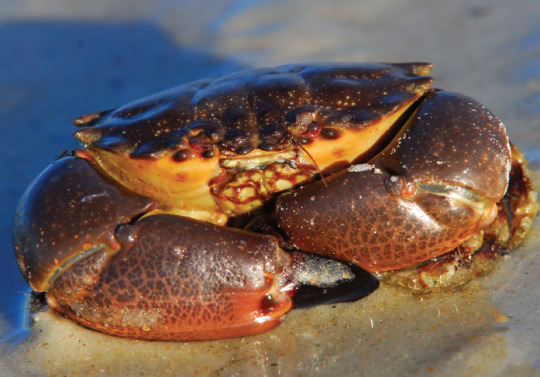
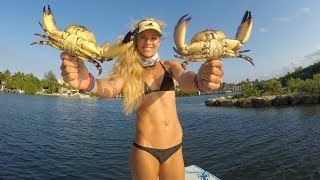

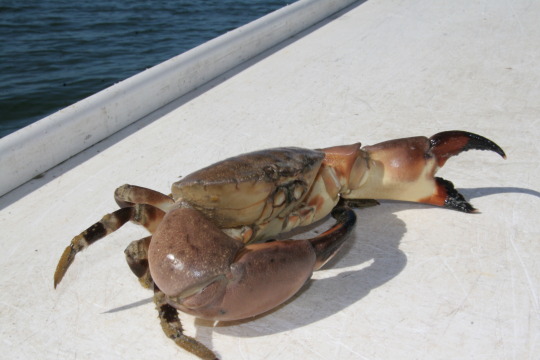

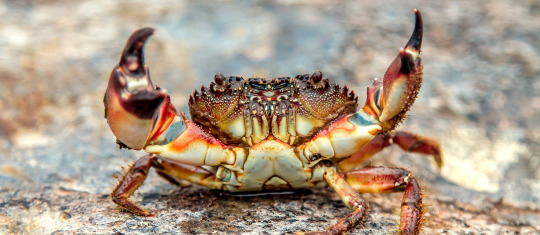
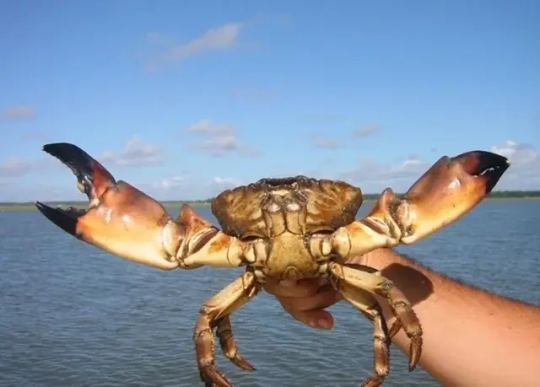
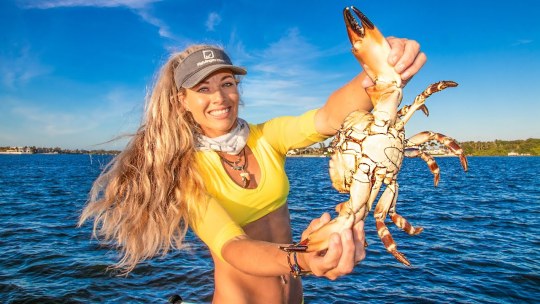


The Florida stone crab (Menippe mercenaria) is a species of true crab native to the coastal waters and salt marshes of the western North Atlantic, from Connecticut to Colombia, including throughout the Caribbean and Gulf of Mexico. Stone crabs typically inhabit shallower waters some 1 to 6.5ft (.3 to 2m) deep often digging and residing in holes on the ocean bottom, oyster reefs, docks, jetties, or rock mounts. Here they tend to spend there days, emerging usually at night to feed up on oysters and other small mollusks, sea grass, carrion, polychaete worms, and other crustaceans. Reaching around 5 to 6.5 inches (125 to 165mm) in carapace length, stone crabs are sexually dimphoric with males growing proportionally larger claws while females tend to reach larger sizes overall. Both sexes are brownish red in coloration with gray spots and a tan underside, sporting large black tipped claws. The Florida stone crab loses its limbs easily to escape from predators or tight spaces, but their limbs will grow back. When a claw is broken such that the diaphragm at the body/claw joint is left intact, the wound will quickly heal itself and very little blood is lost. If, however, the claw is broken in the wrong place, more blood is lost and the crab's chances of survival are much lower. Each time the crab molts, the new claw grows larger. The breeding season of the Florida Stone Crab lasts the whole of spring and summer. The male Florida stone crab must wait for the female to molt her exoskeleton before they can mate. After mating, the male will stay to help protect the female for several hours to several days. The female will spawn four to six times each season, producing up to a million eggs total. The larvae go through six stages in about four weeks before emerging as juvenile crabs, continuing to molt and grow they reach sexual maturity at about 2 years of age. Under ideal conditions a Florida stone crab may live upwards of 8 years.
#pleistocene#pleistocene pride#pliestocene pride#pliestocene#cenozoic#florida#stone crab#crab#florida stone crab#sea life#ocean#crustacean
59 notes
·
View notes
Photo


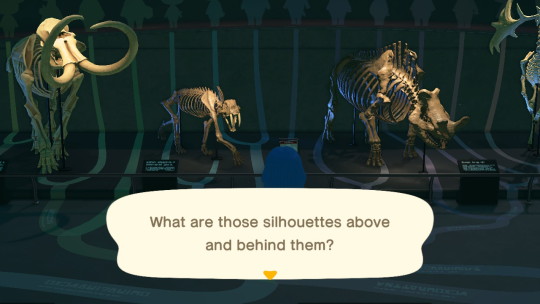

First day of International Museum Day!
#fossils#dinosaurs#bones#vertebrates#cenozoic#pterosaurs#international museum day#acnh museum#acnh holidays#acnh#acnh life#acnh island#acnh hype#acnh community#acnh blog#animal crossing#new horizons#animal crossing new horizons#animal crossing: new horizons#nintendo#nintendo switch#nintendo switch games#nintendo acnh#acnh nintendo#switch#switch games#switch acnh#acnh switch
0 notes
Text
Crystal Palace Field Trip Part 3: Walking With Victorian Beasts
[Previously: the Jurassic and Cretaceous]
The final section of the Crystal Palace Dinosaur trail brings us to the Cenozoic, and a selection of ancient mammals.
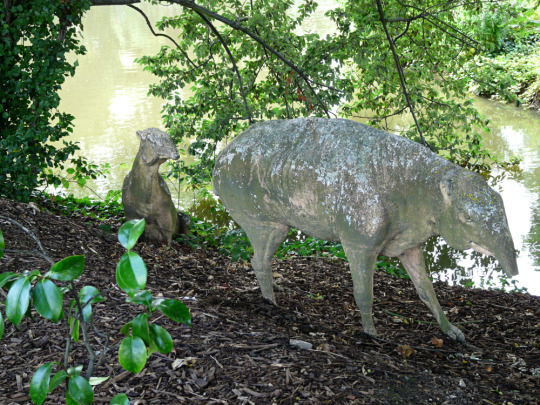
Image from 2009 by Loz Pycock (CC BY-SA 2.0)
Originally represented by three statues, there are two surviving originals of the Eocene-aged palaeotheres depicting Plagiolophus minor (the smaller sitting one) and Palaeotherium medium (the larger standing one).
The sitting palaeothere unfortunately lost its head sometime in the late 20th century, and the image above shows it with a modern fiberglass replacement. Then around 2014/2015 the new head was knocked off again, and has not yet been reattached – partly due to a recent discovery that it wasn't actually accurate to the sculpture's original design. Instead there are plans to eventually restore it with a much more faithful head.
These early odd-toed ungulates were already known from near-complete skeletons in the 1850s, and are depicted here as tapir-like animals with short trunks based on the scientific opinion of the time. We now think their heads would have looked more horse-like, without trunks, but otherwise they're not too far off modern reconstructions.
There was also something exciting nearby:

The recently-recreated Palaeotherium magnum!
This sculpture went missing sometime after the 1950s, and its existence was almost completely forgotten until archive images of it were discovered a few years ago. Funds were raised to create a replica as accurate to the original as possible, and in summer 2023 (just a month before the date of my visit) this larger palaeothere species finally rejoined its companions in the park.
Compared to the other palaeotheres this one is weird, though. Much chonkier, wrinkly, and with big eyes and an almost cartoonish tubular trunk. It seems to have taken a lot of anatomical inspiration from animals like rhinos and elephants, since in the mid-1800s odd-toed ungulates were grouped together with "pachyderms".
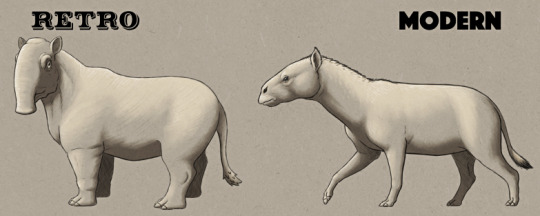
———
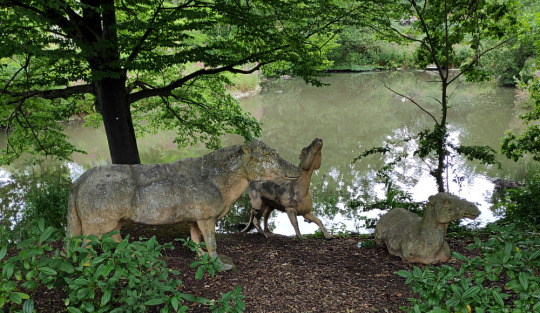
Next is Anoplotherium, an Eocene even-toed ungulate distantly related to modern camels.
(Apparently the sculpture closest to the water is a replica of a now-lost original, recreated from photo references in the same manner as the new Palaeotherium magnum. I can't find a definite reference for when this one was done, though – I'd guess probably during the last round of major renovations in the early 2000s, at the same time as the now-destroyed Jurassic pterosaur replicas?)
Anoplotherium commune is a rather obscure species today, but it was one of the first early Cenozoic fossil mammals to be recognized by science in the early 1800s. Depicted here as small camel-like animals, the three statues are positioned near the water's edge to reflect the Victorian idea that they were semi-aquatic based on their muscular tails.
Today we instead think these animals were fully terrestrial, using their tails to balance themselves while rearing up to reach higher vegetation. Their heads would also have looked a bit less camel-like, but otherwise the Crystal Palace trio are still really good representations.
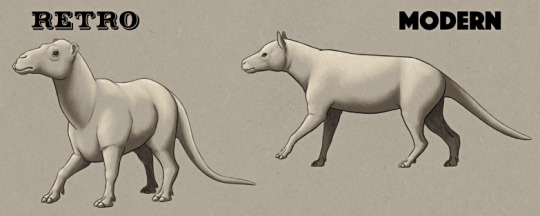
———

Next is a sculpture that's very easy to miss in the current overgrown state.
Who's that peeking over the bushes?
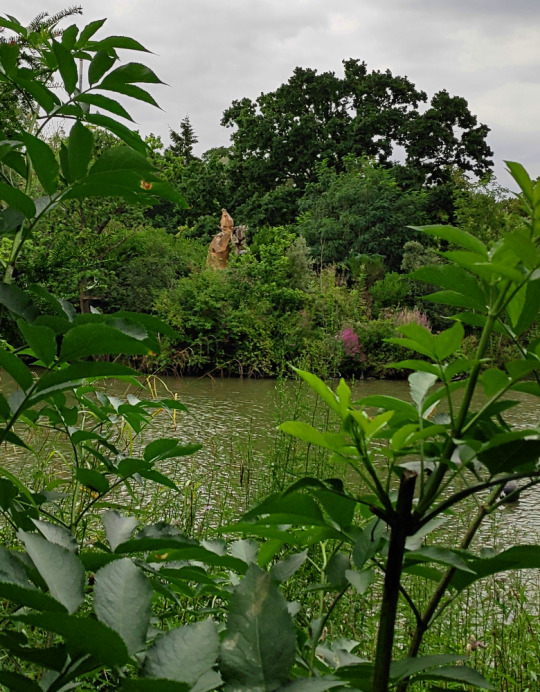
Going all the way around to the far side of the lake reveals a distant glimpse of the Pliocene-to-Holocene giant ground sloth Megatherium.
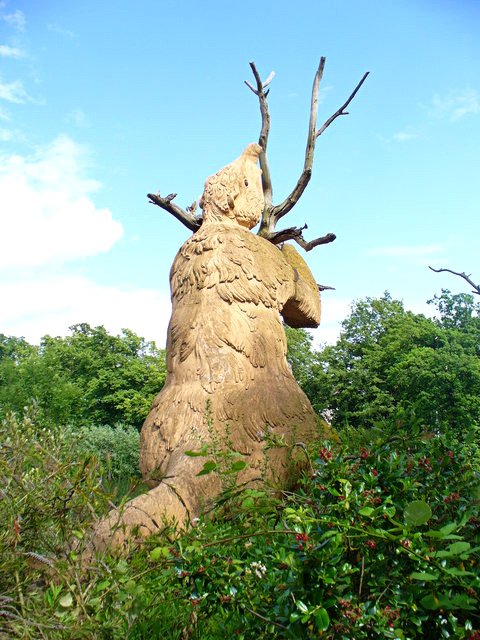
A better view of the Megatherium | "Tree Hugger" by Colin Smith (CC BY-SA 2.0)
Fossils of Megatherium americanum had been known since the late 1700s, but the 1854 Crystal Palace statue was still one of the first life reconstructions of this animal. Its anatomy is actually very close to our modern understanding, depicted with correctly inward-turned feet and sitting upright to feed on a tree with its tail acting as a "tripod".
However, we now know it didn't have a trunk-like nose, but instead probably had prehensile lips more like those of a modern black rhino.
Something weird also appears to have happened to the Crystal Palace Megatherium's hands. Early illustrations of the sculpture all consistently show it with the typical long claws of a sloth, but today it's missing its right hand and its left has only a strangely stumpy paw – suggesting that at some point in the intervening 170 years there was an unrecorded crude repair.
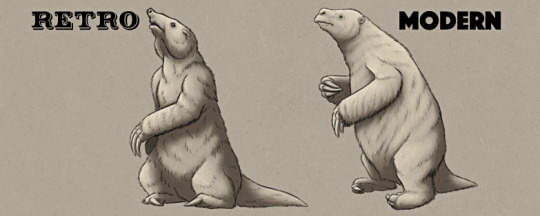
———
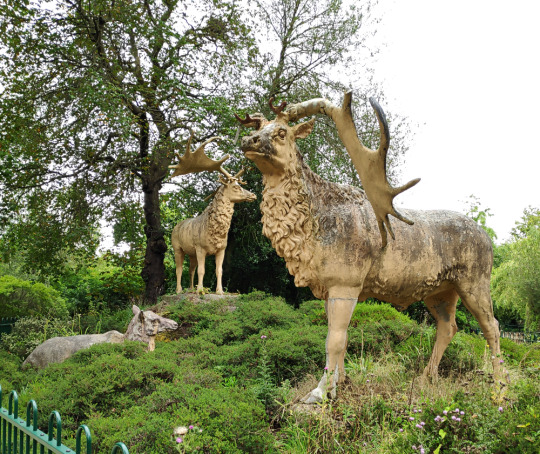
And finally we end the trail with three Megaloceros, the Pleistocene-to-Holocene "Irish Elk" that's actually neither exclusively Irish nor an elk.
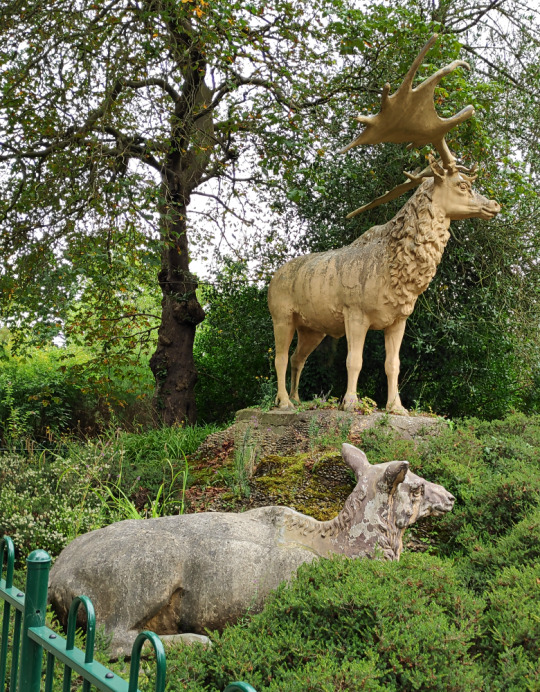
A closer look at the second stag and the doe.
There was originally a fourth giant deer sculpture in this herd, a second resting doe, but it was destroyed sometime during the mid-20th century. The stags also initially had real fossil antlers attached to their heads, but these were removed and replaced with less accurate versions at some point by the mid-20th century.
One of the stags' antlers suffered some damage in 2020, ending up drooping, and since then one antler has either fallen off or been removed.
In the 1850s Megaloceros giganteus was thought to be closely related to deer in the genus Cervus, and so the Crystal Palace reconstructions seem to be based on modern wapiti – specifically in their winter coats, fitting for ice age animals – since both the stags and the doe sport distinctive thick neck manes.
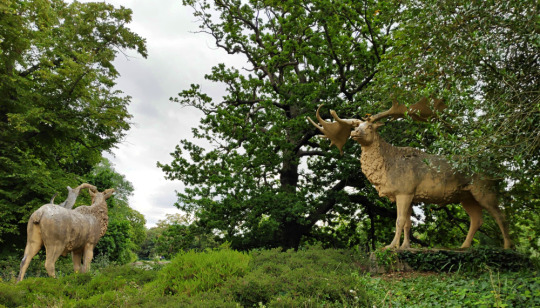
The stags from the other side.
We now know Megaloceros was actually much more closely related to modern fallow deer, and so probably resembled them more than wapiti. Cave art also shows that it had a hump on its shoulders, and even gives us an idea of what its coloration was.
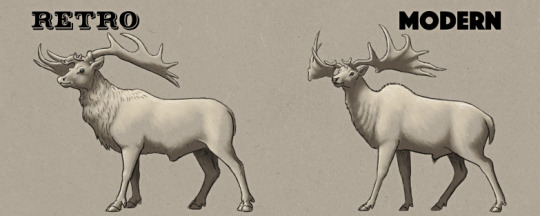
———
…But wait!
There's actually one more thing.
A small statue sitting on the far side of the deer herd, missing its ears, and seemingly representing a Megaloceros fawn.
Except it's actually something very different and very special.
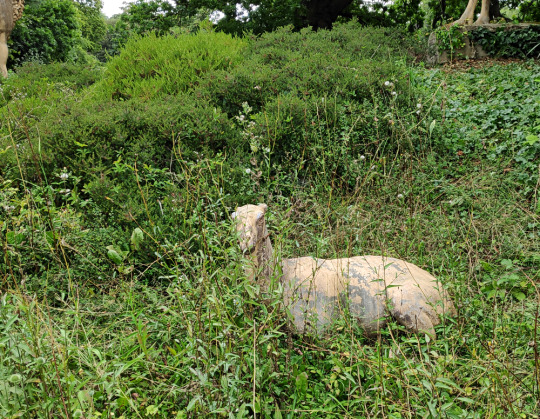
Ceci n'est pas un cerf.
Some recent investigation work revealed some surprising information about the Crystal Palace mammal statues – much like the nearly-forgotten large Palaeotherium, there was originally an entire group of four small Eocene-aged llama-like Xiphodon gracilis that had disappeared from living memory.
There was also no historic record of a fawn with the giant deer, but instead a suspiciously similar-looking sitting sculpture is illustrated among what we now known are the four missing Xiphodon in early records.
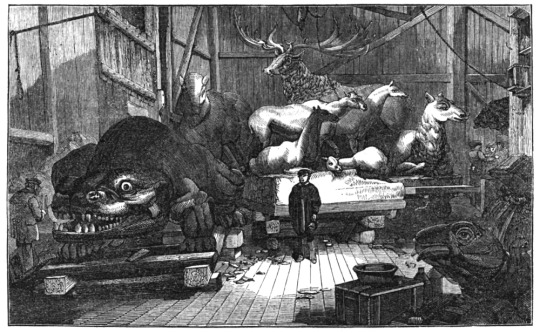
An 1853 illustration of the sculpture workshop. The four Xiphodon are shown in the center, directly in front of a Megaloceros stag and doe. (public domain)
Somewhere in the late 19th or early 20th century three of the Xiphodon must have been completely lost, and the remaining individual was misidentified as a fawn and placed with the giant deer herd.
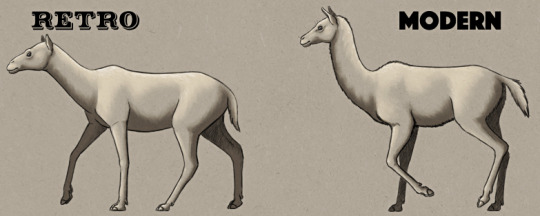
———
Rediscovering a whole extra species among the Crystal Palace statues is exciting, but it also demonstrates just how much of these sculptures' history has gone completely undocumented.
The mammal statues especially seem to have suffered the most out of the "Dinosaur Court", being often overlooked, neglected, disrespected (at one point the Megatherium was inside a goat pen in a petting zoo!), and subjected to cruder repairs. A total of five original statues are now known to be missing from this Cenozoic section – the original large Palaeotherium, the three other Xiphodon, and the second Megaloceros doe – compared to the two pterosaurs lost from the Mesozoic island.
Hopefully the excellent recreation of the lost Palaeotherium magnum is the start of a long overdue new lease of life and conservation attention for all of the Crystal Palace sculptures. It was disappointing seeing them all in such an overgrown state, and with signs of ongoing disrepair in places such as the plant growing out of the big ichthyosaur's back.
But there has been some resurgence of interest and public attention in the Crystal Palace sculptures over the last few years, so with any luck these historic pieces of early paleoart will survive on to their 200th anniversary and beyond, to keep on reminding us of where things began and how far our understanding of prehistoric life has since come.
#field trip!#crystal palace dinosaurs#retrosaurs#i love them your honor#crystal palace park#crystal palace#palaeotherium#anoplotherium#xiphodon#ceci n'est pas un cerf#megaloceros#ungulate#megatherium#ground sloth#mammal#paleontology#vintage paleoart#art#proper art post tomorrow#this took longer than expected#also apologies for my potato-quality camera#i'm an illustrator not a photographer
321 notes
·
View notes
Text
I saw on Twitter that the Chapter 399 title is reference to this poem by Miyazawa Kenji (the "Be not defeated by the rain" poet):
(this panel ties the two poems together)
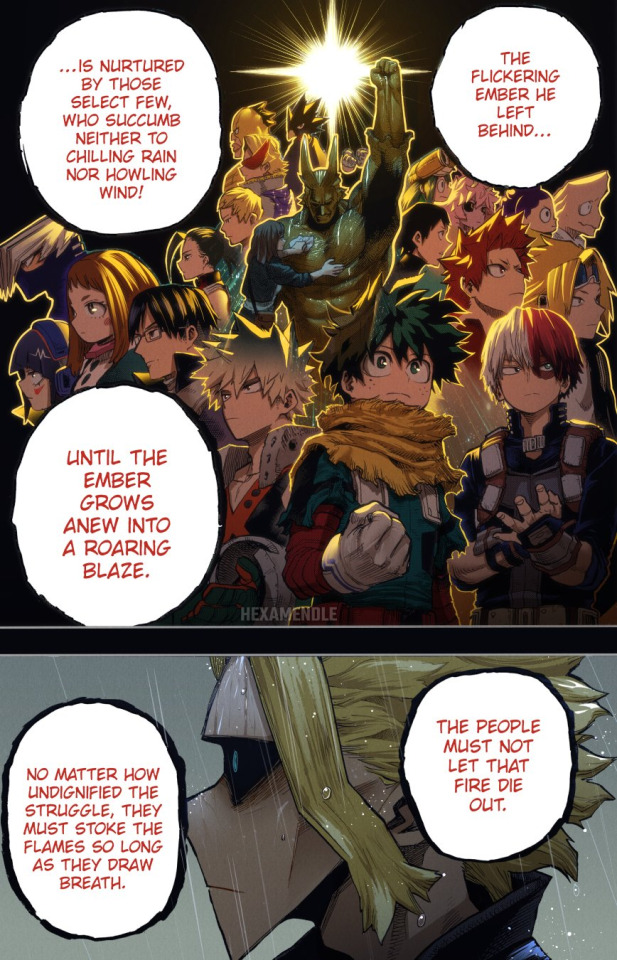
Preface
The phenomenon called I
Is one postulated, organic alternating-current-lamp
Blue illumination
(A complex of all transparent ghosts)
Together with scenes and with everyone
Busily, busily flickering
Very surely to keep on lighting,
One karmic alternating-current-lamp
Blue illumination
(Light persisting, its electric lamp lost)
These, from twenty-two months’
Direction sensed to be past
Papers and mineral ink assembling
(Everything that flickers with me
Everyone senses at the same time)
Continuing on to this,
Are links and links of light and shade,
Sketches of mental images as they are
About all this, people, galaxies, asuras and sea urchins
Eating cosmic dust, inhaling air or saltwater
Might think up fresh ontologies
But they are ultimately a mental climate
Yet surely these recorded scenes are
Each the very scene recorded as it is
And if it is nothing, nothing itself is as it is
And so to an extent is shared by everyone
(All is within me everyone
So everyone within each one is all)
Yet within the Cenozoic alluvial epoch’s
Enormous shining accumulation of time,
The words supposed to have been rendered correctly
In a light’s eclipse, time’s mere speck
(Or a billion years of Asura)
Might have already changed composition or quality
And yet both I and the typographer
Might sense them to be not changed at all,
That, as a tendency, is possible,
Really as we sense our receptive organs
And scenes and characters
Just sensing them in common,
So what is called records and histories, geological histories
Along with various data
(Under the temporal spatial constraints of karma)
Are no more than what we sense
Perhaps two thousand years from now
A pertinently different geology will be adopted
Relevant evidence will emerge one by one from the past
So everyone will think that two thousand years before
There were colorless peacocks filling the blue sky
And then aspiring scholars at the upper stratum of the atmosphere
From the place of glittering frozen nitrogen
Will excavate splendid fossils
Or might well find
In a stratified plane of Cretaceous sandstone
Gigantic footprints of transparent humankind
All these propositions are asserted
As properties of images or time itself
In the fourth dimensional continuum
And some explanation about the context and meaning of the poem from here:
Eternal Light
Kenji had a very good reason, too, to feel the burden of responsibility toward the weak and the meek. He was the eldest son of a man, Masajirō, who made a fortune running the town’s pawnbroking shop. In those days, pawnbroking was a far more respectable profession than it seems to be today. A small provincial town in a prefecture far from the centers of development in the Meiji era (1868–1912) lacked the banking facilities of the big industrialized trading cities. The Miyazawa family business provided essential financial services to the destitute farmers of the region.
As a boy Kenji witnessed many encounters in his father’s shop, where poor farmers came in with whatever they could barter for a bit of cash to feed their families. He grew up with a keen sense of guilt over this and saw it as one of his missions to repay the farmers by teaching them through his writing how to achieve happiness and comfort in life. Not only that, he became an expert on the use of fertilizer and worked tirelessly to increase its applications. Suffering from pleurisy and tuberculosis, it was his indefatigable—perhaps the right word is obsessive—missionary spirit and social activity for the betterment of the local farmers that led, in part, to an early death.
Kenji described himself as a blue light in the preface to his poem “Spring and Pandemonium.” The light that is Kenji flickers incessantly in harmony with all else in the universe. This light—the life of an individual—does not die out at death. He writes in this preface that it is only the lamp, or the body, that is lost. The light remains on, flickering forever.
Though we die, the light and its memory continue to shine; and it is that light that can be seen throughout the cosmos. That is why some of Kenji’s characters end up in the heavens. Campanella, one of the heroes of his exquisite novel Ginga tetsudō no yoru (trans. Night on the Milky Way Train), alights from a train that is traversing the night sky. Another character in this novel, the scorpion, becomes a star so that its body can provide light and heat for an age. Yet another, the nighthawk in “Yodaka no hoshi” (trans. “The Nighthawk Star”), flies straight up into the sky, also turning its body into a star.
Kenji’s characters defy time and space to set for us, if you will, shining examples.
193 notes
·
View notes
Text
I really loved @gwaedhannen ‘s post about wanting more strangeness in First Age Beleriand and I had a post awhile back about potential strange ecology for Middle Earth so I wanted to revisit it with some more thoughts!
Following up to my speculative biology ideas for elves,
Like the last list, these are more jotting down ideas, please please feel free to give me any to elaborate on!
Mammoths on the Helcaraxë and other cold reaches. Tolkien talks of all creatures that walk or have ever walked the earth existing in Valinor and throughout Arda hence prehistoric and extinct species can also exist here. I do also headcanon smaller herds of woolly mammoths and woolly rhinos in northern Hithlum and north of greater Beleriand. Stellar’s sea cows in the frozen waters:(
Early cenozoic aquatic birds such as Hesperornis off the coasts of Balar and Alqualondë.
Enchanted orchards of Valinor; large, seemingly abandoned self containing gardens and orchards. There are fruit tree orchards hidden behind ivy covered walls; some always filled with Autumn breezes, citrus groves always kept warm and bright lined with lemon trees and deep green grass. Except for the Maia who tend them, the only beings who enter the orchards are elves who do so, usually by mistake.
There are places throughout Arda where the Music was not well, loud, enough. They can be the size of a footstep or a field and are not fully connected to the space time continuum. Those who tread on them will end up elsewhere in time or space and will never realize what had happened.
In the great expanses of unexplored Valinor, there are coves, glens, lagoons, and all sorts of other places that seem shift and change, being there one day and not the next. Even while walking through familiar, charted territory, there is always the possibility of ending up in a hidden clearing, covered in hanging mosses and with strange lights all around.
The forests of Beleriand are full of strange, sometimes dark creatures that have never been properly documented. They are the strange hybrids of Yavanna’s creations and Melkor’s corruption and a few have escaped the eyes of even the Ainur.
The underground lakes of Middle Earth, especially around Angband contain blind, hungry beings, nourished by the volcanic soils. Strange fungi and lichen stick to the walls of the caverns and passageways beneath the fortress.
There are hot springs in several locations in Beleriand South of the Ered Wethrin (there are many in the Ered Wethrin of course but these are not exactly relaxation destinations). Namely in Himring, throughout Hithlum, north of Barad Eithel, parts of Dorthonion, in the caves of Androth, and parts of the Ered Luin. Not all of these are used by residents and not all maintain safe temperatures or conditions but some do! In many parts of Northern Beleriand, they're used for bathing and communal relaxation. There are other springs throughout the March of Maedhros and I like the idea of Himring being built around a hot spring. There are hot and warm springs in both Nargothrond and Menengroth. The definition of warm springs differs from hot springs only in average temperature
The caves of Menengroth and Nargothrond allow elves and others access to the strange wonders of the underground world of Middle Earth. They are lit by lanterns and by certain bioluminescent plants. There are windows in key areas that allow sunlight to filter into some of the larger halls and though there are small gardens of species that do not require direct sunlight, some are stationed in the areas where sunlight filters in. A small tributary of the river Narog flows directly through one of the great halls of Nargothrond. Its flora and fauna remain untouched by the elves and algae and aquatic plants as well as small fish, salamanders in their early stages, and stranger creatures are visible to see for those who walk along it.
In realms with Ainur or certain Eldar rule, natural life may not follow typical laws. Melian has great influence over the biodiversity and climate of Doriath for example even without meaning to.
The horror potential of the boundaries of the girdle or of Nan Elmoth. Time and space distorting, the forest becoming a maze, bird calls confusing and disorienting unwary or unlucky travelers
The Ered Gorgoroth, the eerie, mysterious mountain range, bordered to the north by Dorthonion and to the south by Nan Dungortheb. It was said the spawn of Ungolian haunted these mountains and the valley. I have some more posts on this but I've always imagined there being many pools and meres in Ered Gorgoroth, many harmless though frigid and some completely corrupted by the powers of Ungoliants spawn and other beings. Unfortunately, it’s not always possible to know which was which until it was too late.
Chemical reactions causing glimmering or colorful water. Elves learn carefully when this has occurred due to natural phenomena and when it is the result of unnatural influence or Ainur presence.
Salt lakes and landlocked waters mimicking ocean conditions. I’ve always imagined there being a lake like lake Baikal in the March of Maedhros
More Bioluminescence
The realms draped in dragon reek especially around Nargothrond. The pools of Ivrin are ruined by Glaurung and they are the source of the river Narog, the largest tributary to Sirion. The entire land could be poisoned. I imagine that plants wither or lose color, birds and frogs stay silent, animals are thrown off of their natural cycles, The orchards in the hills barren or producing foul fruit, strange happenings resulting from drinking from the river Narog or even eating animals that drank from it…
Alternatively the effects of the water where the power of Ulmo is still strong such as in Nan Tathren or the Twilit Meres
#the silmarillion#beleriand#musing and meta#Valinor#Doriath#ered gorgoroth#I hope these are ok I’m very tired
89 notes
·
View notes
Text
Announcing Woodward Wednesdays

I have for a while wanted to post paleoart by the regrettably underappreciated early paleoartist, illustrator and a pioneer of females in paleoart, Alice B. Woodward. I originally planned a big post for International Women's Day, but my inability to keep on schedule scuttled those plans.
To make up for that mistake, I'm announcing a recurring weekly theme: Woodward Wednesdays! I'll be sharing some select works by Alice Woodward that I've been trying to clean up and retouch from old scans of books, so they won't be quite on par with scanned or photographed originals, which if exist are behind paywalls. Hopefully they'll be some of the best freely available versions of her works anyway.
As a taster of things to come, I want to kick things off with three rarely reproduced images from Evolution in the Past by Henry R. Knipe, from 1912.

This untitled illustration faces the title page, and is more symbolic than realistic, but showcases Woodward's talent more generally as an illustrator.

Titled "Silurian Marine Life" this piece almost feels like a still life, and simultaneously could be a neat little museum diorama. Also that orthocone is strangely adorable.

While it's Woodward's work on dinosaurs that most usually gets remembered in our time, she also illustrated both Paleozoic and Cenozoic life, perhaps more than Mesozoic taxa. This piece features Inostrancevia hunting pareiasaurs from the water, a highly dynamic scene the like of which I do not believe I've seen in paleoart either from this era or after.
17 notes
·
View notes
Text
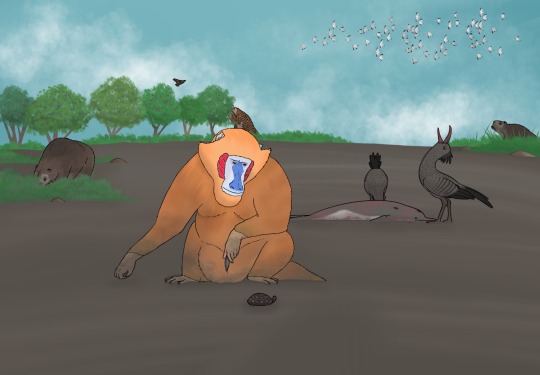
In the Anectyocene North America is one of the most biodiverse continents, thanks to the extreme variety of biomes, and having a biosphere much more different than the rest of the world. Its ten million years isolation from Afro-Eurasia, and partial isolation from South America, thanks to both mountains and the rainforest not allowing bigger pampas and chaco dwellers to reach the northern continent, allowed it to develop much more distinct ecosystems.

One of the most diverse and common clades in the continent are Lepolopidae, walking or running jackrabbits inhabiting both the grasslands, the redwood forests in the west and the humid forests in the east, that diverge in many ways from their Eurasian cousins.
They’ve developed antlers instead of tusks (or horns in some cases), and evolved their outermost toes into opposable and semi-opposable digits, allowing them to become quite skilled climbers, letting them browse on trees regardless of their height, and helping them escape from land dwelling predators.
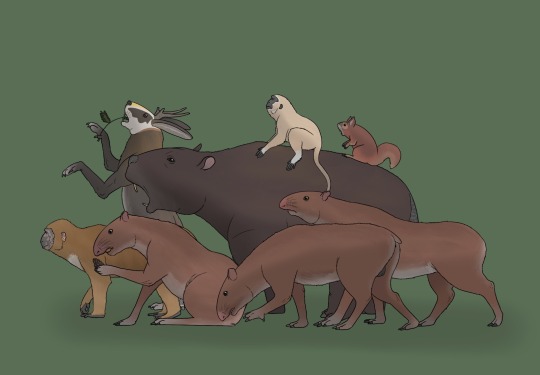
Another quite diverse group of herbivores are the Mayarrhinidae, agouti descendants that came from Central America and expanded into the rest of the continent, that consume almost every kind of plant matter and are quite important seed dispersers of evergreens and oak-trees.
The most important seed dispersers of the continent, tho, are monkeys, especially macaques, whose expansion northwards allowed the expansion of many plants descended from feral fruit producing species.
North American monkeys are all descended from four ancestral introduced species: squirrel monkeys, capuchins, crab eating macaques and rhesus macaques. The first two are for the most part limited to Florida, and on a lesser degree the denser parts of the southern US’ forests, while the two macaques have an almost continent-wide range, going from British Columbia to Sinaloa, and from California to Newfoundland. Thanks to the absence of primates in these areas these macaques have been able to undergo an adaptive radiation, giving life to the polyphyletic group of the New World macaques (Bibliopithecinae, for the rhesus descendants, and Galactopithecinae, for the crab-eater descendants), and resulting in a myriad of forms resembling baboons, geladas, tamarins (that in some cases even compete with squirrels) and apes.
Many changed diets, becoming grazers, leaf eaters and in one case molluscivorous. The Cyonuropithecus caelurorrhinus is a Galactopithecine part of a gelada like genus inhabiting the areas of the Atlantic coast of Canada and the Northern US. Although the other members of its genus are for the most part grazers their diet is mainly made up of molluscs and crabs that they found on the shore with low tide. For this lifestyle they evolved naked hands and wrists and a stronger bite force. They’re also some of the best primate swimmers, thanks to their partially webbed hands.
Some of the biggest herbivores of the continent evolved from beavers, the biggest surviving rodents, that would become as big as hippos and rhinos, and would graze on the bushes and grasses on the ground. The actual biggest land animals, tho, are the ground porcupines, that came from South America, and being generally good rainforest dwellers were able to pass through Central America with ease.
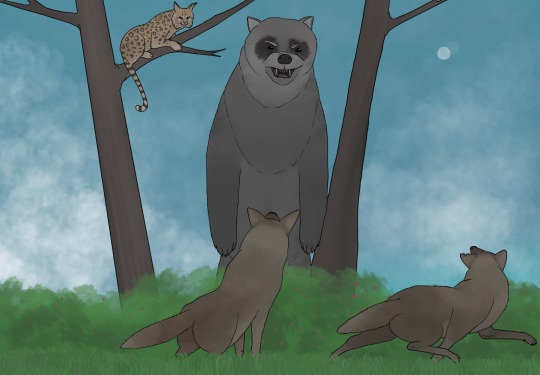
The predators of North America, though, are what really set it apart from the rest of the world, being the only continent, not counting islands like Madagascar, without a mammalian apex predators. Like South America during most of the Cenozoic the continent’s hypercarnivores are birds, more specifically caracara descendants, whose only competitors are the Diacyonines, bear-like raccoon descendants with an omnivorous diet. The other main predatory clades of the continent are the Latrantocyonines, wolf analogues descended from coyotes, and partially from dogs too, the Lycornithines, roadrunners that mainly scavenge and hunt small game, and Bizofelines, descendants of domestic cats that are now arboreal lynx like hunters, and effective mountain dwellers too.
https://discord.gg/KjusGndh discord link if u wanna join the project’s server
#spec evo#spec bio#speculative evolution#speculative biology#artwork#worldbuilding#digital art#epigene period#future earth
15 notes
·
View notes
Note
im sick and tired of paleontology games that aren't made for adults. kids have enough silly games where they can dig for t rex bones to silly music and cartoonish graphics, and they deserve it. interactive science games for kids is good and enriching. but the market is so swamped with kids games that i can't find a game that lets me dig up fossils with more enriching gameplay mechanics and content!!!
if i could make a game like this, my ideal game... would include the process of setting up the dig sites. Of excavating and cleaning the fossils. It would include more animals than just tree, triceratops, stegosaurus, brachiosaurus, and possibly pterodactyl. Most importantly it would not JUST contain dinosaurs, but life from all across the phanerozoic eon and throught the whole taxonomy tree- paleozoic, mesozoic, cenozoic, mammals and reptiles and birds and fish and crustaceans and plants and EVERYTHING. I WANT A VIDEO GAME WITH A REALISTIC AND COMPLETE PALEONTOLOGICAL EXPERIENCE PLEASE i would pay MY ENTIRE LIFE SAVINGS to a game development team to make it happen and if i ever learn how to make a game YOU'LL BE SORRY
.
16 notes
·
View notes
Text
TMMN Alien Society - Analysis
This is only based on little lore we know and is just my analysis and theory

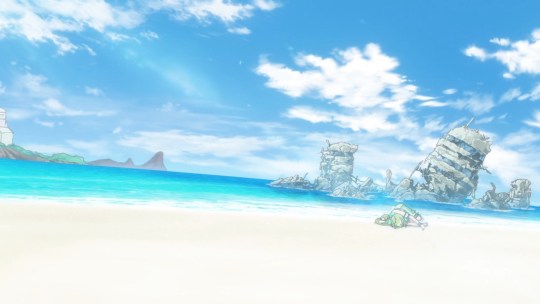
Based on the landscapes, the suken buildings, the vulcano in the background, the tropical plants etc, we can assume this was pre-modern humans Japan, Hunter-gatherers arrived in Japan in Paleolithic times, 30,000 BC but the Japanese archpelago dates back as far as 100,000 years.

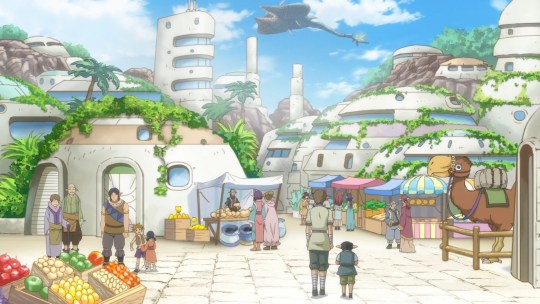
Jōmon Culture ( REAL LIFE / EARTH EVENTS)
Middle Jōmon (ca. 2500–1500 B.C.)
This period marked the high point of the Jomon culture in terms of increased population and production of handicrafts.
Look who has lots of ceramic’s

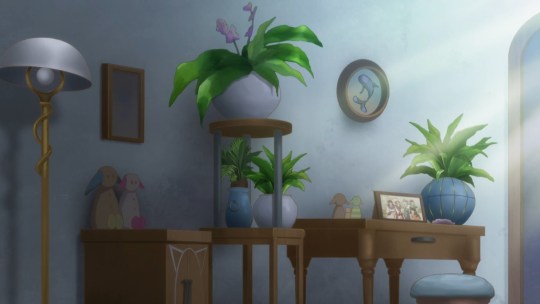
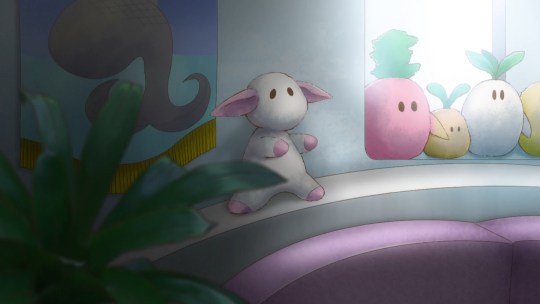
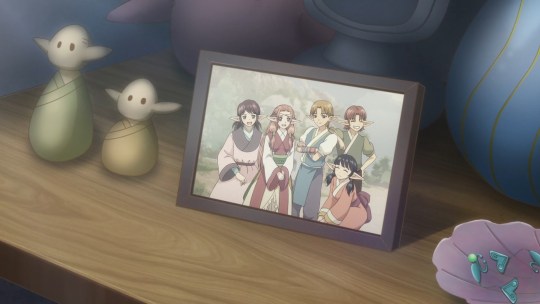
handcrafts

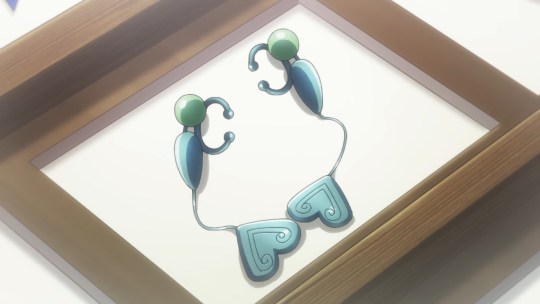
The warming climate peaked in temperature during this era, causing a movement of communities into the mountain regions.

Late Jōmon (ca. 1500–1000 B.C.)
As the climate began to cool, the population migrated out of the mountains and settled closer to the coast, especially along Honshū’s eastern shores. Greater reliance on seafood inspired innovations in fishing technology, such as the development of the toggle harpoon and deep-sea fishing techniques. This process brought communities into closer contact, as indicated by greater similarity among artifacts. Circular ceremonial sites comprised of assembled stones, in some cases numbering in the thousands, and larger numbers of figurines show a continued increase in the importance and enactment of rituals.
Final Jōmon (ca. 1000–300 B.C.)
As the climate cooled and food became less abundant, the population declined dramatically. Because people were assembled in smaller groups, regional differences became more pronounced. As part of the transition to the Yayoi culture, it is believed that domesticated rice, grown in dry beds or swamps, was introduced into Japan at this time.
This all seems to tie perfectly with the alien race in Tokyo Mew Mew New.
Fauna: This goofy bird reminds me of a bird of terror
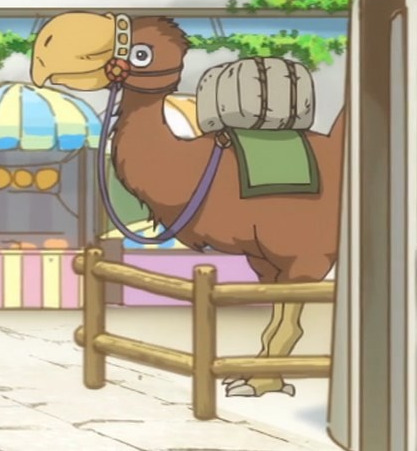
Phorusrhacids, colloquially known as terror birds, are an extinct family of large carnivorous flightless birds that were among the largest apex predators in South America during the Cenozoic era; their conventionally accepted temporal range covers from 53 to 0.1 million years ago. They ranged in height from 1 to 3 m.
Aliens domesticating terror birds? BASED.
But aren’t them specific to America? Yeah but this is an anime with aliens and magical girls and genetic modified humans XD so maybe terror birds could have existed in Japan in this timeline...or some regular herbivore bird simply evolved into a big BIRB.
Well back to the main topic, the enviroment and climate change, like real life records show, this “region” climate began to warm so much it started raising the sea level.


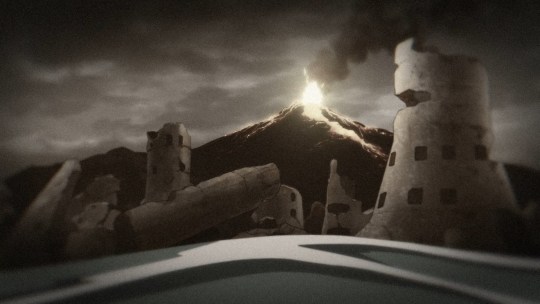
But why some refuse to leave?

if we think of real life experience: wars and dramatic climate changes can lead people to find a new way to survive elsewhere or on the other side to stay and try to overcome the difficulties, ti is always been like that.
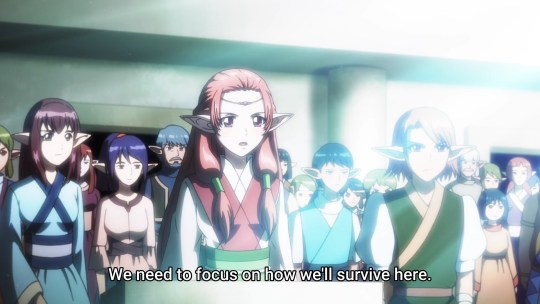
they're afraid of the unknown, what waits them out there may be worst than their fate on earth sentimental behavior,elders etc


My theory is that, they’ve sent a couple of aliens into the new world in order to build a decent new home for everyone, once their new home was established they would come back and take the rest with them.
But sadly the disaster occured too soon, before the previous team could have contact with the “aliens on earth”-
Probably the human species could have develop from the previous “aliens” that survived and lost their “alien” characterisitcs or simply evolved the normal way real humans did
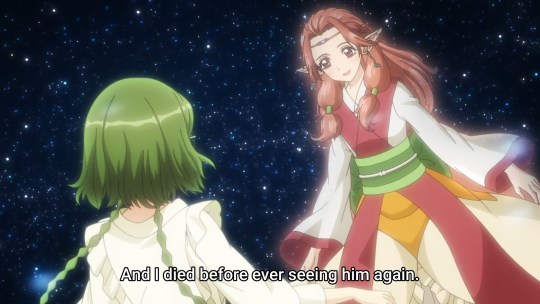
Source for Jomon culture
65 notes
·
View notes
Text
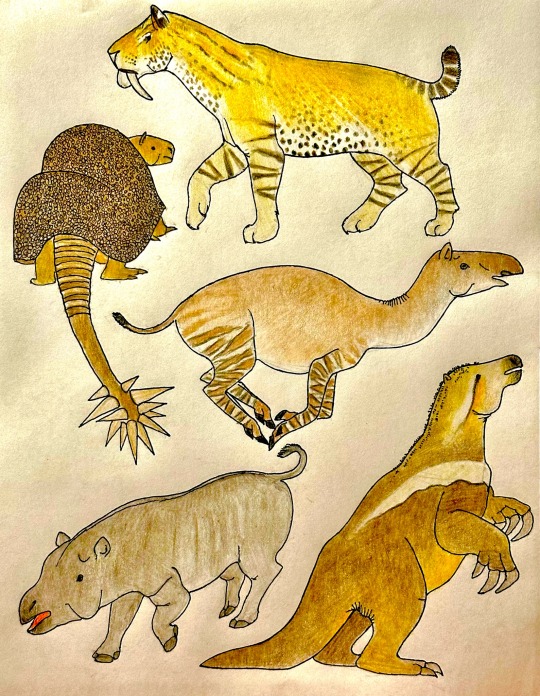
Sketches of some South American animals that were once part of the famous Pleistocene megafauna, from top to bottom: Smilodon populator, Doedicurus clavicaudatus, Macrauchenia patachonica, Toxodon platensis and Megatherium americanum
#paleoart#paleontology#pleistocenemegafauna#pleistocene#pleistocene south america#smilodonpopulator#smilodon#macrauchenia#megatherium#doedicurus#cenozoic life#cenozoology#cenozoic
141 notes
·
View notes
Text
28 notes
·
View notes
Text



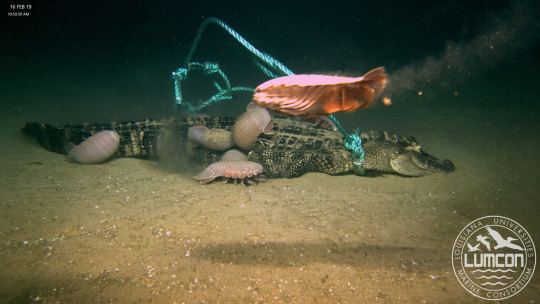
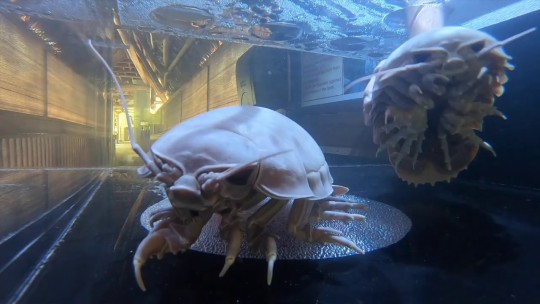


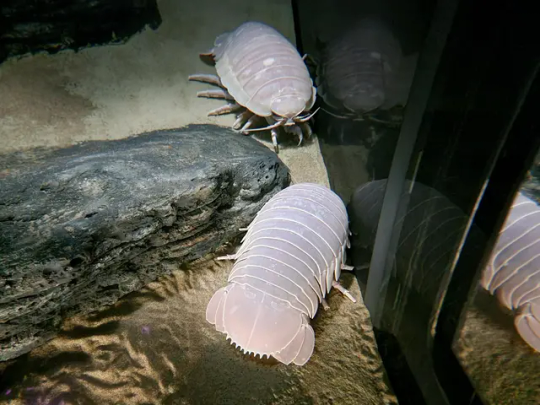
Bathynomus giganteus, more commonly known simply as the giant ispod is a species of aquatic crustacean, in the giant isopods genus Bathynomus and the order Isopoda. As such it is related—albeit distantly—to shrimps and crabs. They are enemdic to the western atlantic ocean, particularly with in the Caribbean sea and gulf of mexico where they prefer cold benthic waters some 1050 to 7050ft (320 to 2150m) below the surface. Bathynomus giganteus is notable for being the first giant isopod known to science, being documented and described in 1879 by French zoologist Alphonse Milne Edwards after the isopod was found in fishermen's nets off the coast of Tortuga. Like many animals that live in the deep sea, giant isopods are scavengers which feed primarily upon detritus, carrion, and other aquatic debris. Reaching 7.5 to up to 20 inches in length, like all crustaceans, it has jointed legs and a hard exterior called an exoskeleton. Three segments make up its body: the head (cephalon), the thorax (pereon) and the abdomen (pleon). It moves about using 14 legs, a fan-like tail called a uropod, and fluttering swimmerets called pleopods. The head possess four jaws, 2 large compound eyes, and two sets of antennae. Breeding tends to occur in winter and spring. Mature females develop a pouch known as a marsupium, where the eggs are stored until the young are ready to emerge as miniatures of the adults, known as manca, completely bypassing a larval stage. Under ideal conditions a giant isopod may live up to 30 years.
#pleistocene#pleistocene pride#pliestocene pride#pliestocene#cenozoic#giant isopod#isopod#deep sea#sea creatures#marine life
70 notes
·
View notes
Text
finished watching a life on our planet. if prehistoric planet didnt exist id say WOW THAT WAS AMAZING but it does, and it Raised The Bar So Fuckin High so i wwill instead say its mid. i enjoyed the visuals ESPECIALLY when seeing things set in the cenozoic (the maiacetus....MWAH! CHEFS KISS, A GOOD WATER DOG) but the stuff set before that looked.....Bad....happy to see feathered maniraptors but even then it looks like really iffy and weird. something about the arrangement and positioning of the feathers. big theropods like tyrannosaurus rex and sinraptor all look like ass </3
THE NARRATION SUCKS BIG TIME ALSO. leans very....awesome-bro-y....it stinks so bad but i kinda got used to it lol. it has way more live-action footage (of modern-day earth) than i expected and i skipped most of them cuz theres a billion other documentaries out there if i wanna see like wolves and lions and antelope and crocodiles
ITS OKAY I GUESS. it looks pretty. if anything i hope it is just the beginning of more beautiful (and hopefully more accurate) prehistoric documentaries..
14 notes
·
View notes
Text




REVIEW: Astrovitae magazine Issue 2
Astrovitae is a magazine devoted to creators in the speculative fiction subgenre of speculative biology. Though people have imagined fantastic beasts and beings since the beginning of our species, speculative biology focuses on developing organisms using our current knowledge of biology, ecology, physics, geology and other sciences. Though even within these limits there is a wide spectrum, as some creators may work with strict hard science rules while others prefer to design fantastic beasts closer to myth and folklore.
This second issue of Astrovitae shows significant refinement from the already impressive first issue. There is a new section on speculative biology news featuring interviews, YouTube videos, Kickstarters, and new projects.. It’s a good way to keep abreast of the bewildering variety of speculative projects out there. This issue also features the first of a regular book review column, beginning with Christian Cline’s The Teeming Universe.
Collaborative projects are the focus of issue two, with articles on the online Discord-based Specposium convention, the Project Sil Discord, and a preview of Almost Real magazine. The latter showcases the Keraunoplast, fascinating slime mold-like organism that feeds directly on electricity and can actually bond with old space junk to form cybernetic life forms. This issue came out in September 2021, and it’s fascinating to see how the imposed quarantine of the Covid pandemic and the subsequent burst of more online communication through Discord, Instagram and other social media has led to the birth of so many new speculative biology projects.
Hyperlinks embedded in the Pdf pages are a really useful feature. Readers can click an article’s byline to go to the creator’s website or other social media. Clicking the section heading will also take one back to the table of contents.
As with the previous issue, Astrovitae #2 is divided into several sections: Captivating Worlds, with overviews of large world-building projects; Artist Spotlight, which looks at the creators themselves and their bodies of work as a whole; and Creature Compendium: which zooms in on individual organisms.
Captivating Worlds begins with an in-depth look at the natural history of Mathijs Megens’ Amethyst Beach Shield, a chemosynthetic armored organism.
The next entry, Domenic Pennetta’s Project Perditus is a survey of a world that resembles Earth in the early Paleozoic, with creatures that will feel familiar to many paleo-enthusiasts, while still retaining their own alien-ness.
The Alternate Cenozoic Project by Thien Anh Nguyen is a what-if about an earth where the large dinosaurs were not killed off by an impact form space, following in the tradition of works such as Dougal Dixon’s The New Dinosaurs, and the Speculative Dinosaur Project.
Sea Serpents of the Arthechocene by Alejandro Martínez Fluxá is set in the future after human-caused mass extinctions. With all the large pinnipeds and cetaceans gone, sea snakes evolve to fill the niche of large oceanic predators and filter-feeders, becoming the long, whale-like tiamats.
Evan Proctor’s Before Planet Feni is primarily an outline of the dominant species on the titular planet, as well as some background about the planet’s explorers. Hopefully there will be more to come in this work.
The World of Nijin-Konai by Lorenzo Battilani is a hard science look at a primarily aquatic alien world, delving into microbiology and genetics with a radiation resistant enzyme and redundant genes that allow the planet’s organisms to adapt to the lethal UV radiation of their native star. Battilani also discusses the complex neurological, metabolism and anatomy of his creature in minute detail that could have come from a college biology textbook.
Artist Spotlight features an article by YouTube creator Biblaridion detailing how their channel grew from a tutorial on concepts in evolutionary biology to a detailed study of a fictional world.
Reinhard Gutzat offers a meditation on the sometimes rocky intersection of creativity and biological accuracy during an artist’s development process.
Artist Sibilla Pepi offers a look at their design process as they develop a feathered wyvern based on the biology of real-life birds.
Creature Compendium showcases individual speculative creatures in the manner of pages taken from a field guide and includes a giant diving beetle, an alien tadpole, a balloon-like organisms that lives in the atmosphere of a gas planet, and more.
The authors write with the enthusiasm and vernacular of seasoned biologists well versed in scientific nomenclature. Their creatures are given unique taxonomic names and anatomical terms, adding greatly to their believability. These complex names can get a bit overwhelming, however, leading to what one might call “textbook burnout”. Sometimes I found it necessary to go back and reread articles to fully absorb all the names. This terminology might turn off a reader with a scientific background, but the imaginative variety on display should hold most interests. This is a minor critique, though, and the magazine overall is a professional-quality publication that would be at home in any library shelf. I am particularly pleased to see more projects focusing on the hypothetical evolution of Earthly creatures.
Astrovitae issue 2 is vailable both as a free downloadable PDF from the magazine’s website and as a virtual book that one can flip through on Yumpu.com
14 notes
·
View notes